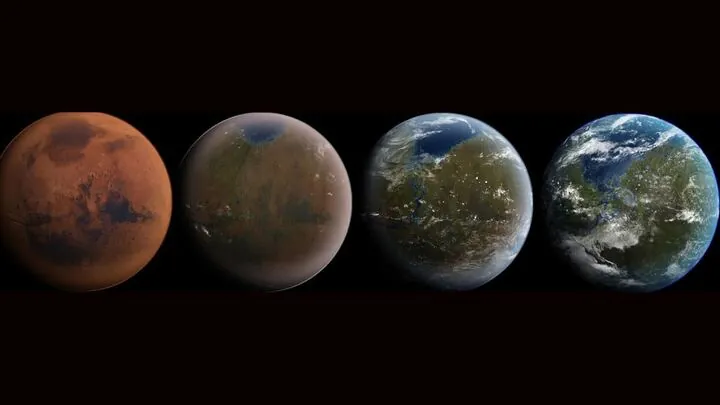
Mars: From Red Desert to Thriving Green Oasis? The Terraforming Debate Heats Up!
2025-06-02
Author: Wei Ling
A Bold Vision for Mars
The dream of terraforming Mars — transforming the barren landscape into a life-sustaining haven — has typically seemed far-fetched, the stuff of blockbuster sci-fi films. But a groundbreaking new study suggests it's time to reconsider this audacious concept.
Erika DeBenedictis, CEO of Pioneer Labs and lead author of the study, declares, "Thirty years ago, terraforming Mars wasn't just hard — it was impossible. But with innovations like SpaceX's Starship and advances in synthetic biology, it's now within our reach."
The Case for Greening Mars
Why bother transforming a distant planet, you ask? According to study co-author Edwin Kite, an associate professor at the University of Chicago, the answer is simple: "Living planets are better than dead ones." Mars, once teeming with potential for life, offers a unique chance to rectify past mistakes and embrace the ultimate environmental restoration challenge.
Though actual terraforming may take centuries, the vision includes a Mars with stable bodies of liquid water, breathable air, and perhaps even human cities. Imagine a thriving ecosystem born from our efforts to revive this ancient world.
A Leap for Humanity and Life
Robin Wordsworth, an environmental science professor at Harvard, emphasizes that terraforming Mars transcends mere colonization. "I see humanity as an integral part of the biosphere. Life is precious; we must contemplate how we can propagate it to other worlds," he explains.
Revisiting Earthly Challenges
Interestingly, terraforming Mars could also inspire solutions to Earth's pressing climate and sustainability challenges. Nina Lanza, a planetary scientist from Los Alamos National Laboratory, views the Red Planet as a testing ground for planetary engineering.
"If we want to modify our environment wisely, why not experiment first on Mars?" she questions. This approach could help us tread carefully on our home planet.
Proceed with Caution: Ethical Considerations
However, not all scientists are on board. Echoing warnings reminiscent of "Jurassic Park," they argue we should first ponder, "Should we?" Lanza points out that changing Mars irreversibly may erase crucial knowledge about its history and the potential for ancient life.
Phases of Terraforming Mars
What would it take to terraform Mars? Experts propose a phased approach: first, warming the planet's surface using innovative climate engineering techniques, which could potentially melt subsurface ice and release carbon dioxide to create a thicker atmosphere.
Next, introducing specially engineered extremophile microbes to kickstart an oxygen-rich ecosystem. Over time, a complex biosphere could flourish, allowing for advanced plant life — and eventually, humans might breathe freely.
Next Steps: The Road Ahead
The authors agree that to make terraforming a reality, we must advance on multiple fronts at once. Kite emphasizes the importance of understanding the costs and benefits through a blend of theoretical work and practical experiments.
As we look ahead, Lanza advocates for the Mars Sample Return mission to bring back valuable material from the planet — materials that could answer fundamental questions about Mars' composition and potential for life.
Future missions to Mars should also include experimental trials of terraforming strategies, such as localized warming.
Final Thoughts: The Journey Begins Now
While fully transforming Mars may span generations, the groundwork must start immediately. As Lanza puts it, "This is how we turn imagination into reality — through relentless scientific pursuit. This journey has the potential to transform our world."


 Brasil (PT)
Brasil (PT)
 Canada (EN)
Canada (EN)
 Chile (ES)
Chile (ES)
 Česko (CS)
Česko (CS)
 대한민국 (KO)
대한민국 (KO)
 España (ES)
España (ES)
 France (FR)
France (FR)
 Hong Kong (EN)
Hong Kong (EN)
 Italia (IT)
Italia (IT)
 日本 (JA)
日本 (JA)
 Magyarország (HU)
Magyarország (HU)
 Norge (NO)
Norge (NO)
 Polska (PL)
Polska (PL)
 Schweiz (DE)
Schweiz (DE)
 Singapore (EN)
Singapore (EN)
 Sverige (SV)
Sverige (SV)
 Suomi (FI)
Suomi (FI)
 Türkiye (TR)
Türkiye (TR)
 الإمارات العربية المتحدة (AR)
الإمارات العربية المتحدة (AR)